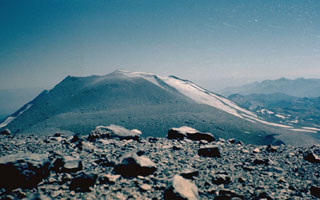Report on Nevados de Chillan (Chile) — 8 March-14 March 2017
Smithsonian Institution / US Geological Survey
Weekly Volcanic Activity Report, 8 March-14 March 2017
Managing Editor: Sally Sennert.
Please cite this report as:
Global Volcanism Program, 2017. Report on Nevados de Chillan (Chile) (Sennert, S, ed.). Weekly Volcanic Activity Report, 8 March-14 March 2017. Smithsonian Institution and US Geological Survey.
Nevados de Chillan
Chile
36.868°S, 71.378°W; summit elev. 3180 m
All times are local (unless otherwise noted)
OVDAS-SERNAGEOMIN reported that the number of phreatomagmatic explosions at Nevados de Chillán increased on 7 March, after a month and a half of no explosive activity. Explosions from the craters on the E side of Volcán Nuevo and the Volcán Arrau dome complex produced plumes that rose 300 m on 7 March, and then subsequently seismicity and surficial activity gradually increased. On 11 March there were eight explosions detected. Plumes rose as high as 500 m and incandescent material was ejected 500 m away from the craters. A series of eight explosions beginning at 0617 on 16 March generated ash plumes that rose 1.5 km and again ejected incandescent material. The Alert Level remained at Yellow, the middle level on a three-color scale, and the public was reminded not to approach the craters within a 3-km radius.
Geological Summary. The compound volcano of Nevados de Chillán is one of the most active of the Central Andes. Three late-Pleistocene to Holocene stratovolcanoes were constructed along a NNW-SSE line within three nested Pleistocene calderas, which produced ignimbrite sheets extending more than 100 km into the Central Depression of Chile. The dominantly andesitic Cerro Blanco (Volcán Nevado) stratovolcano is located at the NW end of the massif. Volcán Viejo (Volcán Chillán), which was the main active vent during the 17th-19th centuries, occupies the SE end. The Volcán Nuevo lava-dome complex formed during 1906-1945 on the NW flank of Viejo. The Volcán Arrau dome complex was then constructed on the SE side of Volcán Nuevo between 1973 and 1986, and eventually exceeded its height. Smaller domes or cones are present in the 5-km valley between the two major edifices.
Source: Servicio Nacional de Geología y Minería (SERNAGEOMIN)

